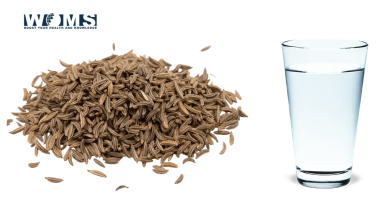Vitamin D deficiency: Pandemic of the new era

Vitamin D is an essential nutrient required in our body and many are unaware that the health complications they face are due to the lack of Vitamin D in their body. Similarly, Vitamin D deficiency is also linked to the ongoing pandemic.
The pandemic that has surrounded us from 2020 is still there and has not been completely eradicated. Do you know that vitamin deficiency can make you more prone to getting COVID? Similarly, if you have a sufficient amount of Vitamin D in your body then you have less risk of getting it.
Vitamin D is required for boosting your immune system and keeping your bones strong and healthy. So, due to its deficiency, it might bring various conditions which can increase the risk of getting Covid. Let’s know about it in detail.
Vitamin D deficiency
Vitamin D deficiency is described as blood levels of less than 20 ng/mL. Most of the body cells work as receptors for vitamin D to perform proper functioning. In addition, our body makes it from cholesterol by utilizing sunlight. The endocrine society recommends an intake of 1500-2000 IUs daily for most adults.
If you avoid going outdoors, have milk allergies, or strictly follow the vegetable diet, you might be at risk of Vitamin D deficiency. Moreover, vitamin D, also known as the sunshine vitamin, is naturally present in fish, fish liver oils, egg yolk, and fortified items and grains.
Causes of vitamin D deficiency
Vitamin D deficiency is multifactorial, many other factors act synergistically in the form of this deficiency disorder. This section will explore the most common causes of this vitamin D deficiency.
- Dark complexion
- Elderly peoples
- Obese or overweight individuals body
- Not having fish or dairy products in meal
- Living away from equator – little sun around with no sunlight exposure
- Excessive use of sunscreen when going outside
- Staying indoors or bedridden patients
- Chronic liver or kidney disorders
- Hyperparathyroidism
- Medications that affect vitamin D production
Functions of vitamin D
Vitamin D also acts as a hormone more than just a vitamin. Most commonly, it is essential for the absorption of calcium from the gut into the blood. In addition, vitamin D regulates calcium and phosphorus levels to an optimum limit. Moreover, it also has a significant role in the mineralization process of bone. Let us have a look at why vitamin D is beneficial for body functioning.
Bone metabolism
Vitamin D has a significant impact on bone deposition and resorption. In addition, vitamin D is necessary to absorb calcium from the gut and maintain the balance of calcium and phosphorus. Calcium and phosphorus maintain bone integrity and strength. In this way, vitamin D protects from several bone diseases like rickets in children and osteomalacia.
Works along with parathyroid glands
Parathyroid glands optimize the calcium levels in the serum by coordinating with the kidney, bones, and gut. If there is excessive calcium content in the daily uptake, vitamin D helps absorb maximum calcium and utilize it throughout the body.
Wound healing
Impaired or slow wound healing after any trauma or surgery indicates a lower level in the blood. Several studies suggest that vitamin D increases the production of chemicals that are helpful in the wound healing process. In addition, vitamin D also assists in controlling inflammatory processes and fighting against infections.
Anxiety control
There is a link between vitamin D deficiency and anxiety disorders. A study reports that people with anxiety have a lower level of calcidiol, which is an active formula of vitamin D. Thus, vitamin D helps to relieve depression and anxiety.
How vitamin D deficiency is going to be the pandemic of the new era?
Vitamin D deficiency is a global public health concern affecting a vast majority of the population. In addition, vitamin D deficiency is not limited to specific areas or some groups of people. It is affecting a large number of the community from all over the world. Vitamin D deficiency is independent of gender as well as geographical areas affecting the global population rapidly.
Vitamin D deficiency evolves so commonly that there seem to be no countries that have the highest ratio of severe vitamin D deficiency among the people suggesting the worst condition. A study of 316 adults of 30-50 years of age from the Middle East showed that about 72.8% are severely vitamin D deficient, having valued less than 15 ng/dL.
Nowadays, people avoid going outdoors and prefer to stay at offices and home, making them vulnerable to vitamin D deficiency. Moreover, people use sunscreen to protect themselves from sun rays while going out. The use of sunscreen is also a factor for this emerging pandemic of vitamin D deficiency.
All the above-mentioned factors suggest a lead role in making this vitamin D deficiency a pandemic. Vitamin D is spreading rapidly without any limitation of boundaries. So we can say that if we don’t manage it, vitamin D deficiency will be the pandemic of this era.
Vitamin D deficiency as a pandemic in past years:
Vitamin D deficiency is widely prevalent throughout the world irrespective of gender, age, country. In past years, vitamin D appeared as a pandemic because of its increased prevalence. There are high rates of vitamin D deficiency and insufficiency even among healthy individuals. Moreover, vitamin D deficiency has become a primary public concern with osteoporosis, osteomalacia, and other chronic diseases.
A recent study reports that more than one billion people have vitamin D deficiency or insufficiency. It also highlights that 50-100 percent of elder age in Europe and the US are almost vitamin D deficient. At the birth time, approximately 76 percent of mothers and infants are vitamin D deficient even if the mothers were taking 600 IUs of vitamin per day.
Vitamin D deficiency is also emerging as a pandemic in this new era. The common causes for vitamin D deficiency are lifestyle change, obesity, changes in fortified products, and sun protection. There is a need for adequate exposure to sunlight for the management of vitamin D deficiency. Moreover, oral intake and supplementation are necessary to balance baseline blood levels.
Sign and symptoms for vitamin D deficiency
Vitamin D deficiency presents with several chronic as well as acute symptoms. Decreased serum levels are associated more often with these signs and symptoms.
- Fatigue
- Bone pain
- Muscle cramps
- Anxiety and depression
- Muscle weakness or aches
- Impaired healing of wounds
- Bone resorption
- Hair fall or alopecia
- Weight gain
How to diagnose vitamin D deficiency?
To diagnose vitamin D deficiency, you only have to go through a blood test to assess vitamin D level. There are two types of tests for vitamin D deficiency. The most common test is 25-hydroxyvitamin D, also known as 25(OH)D. For this test, you have to give a blood sample and rest, you need to wait for the test results.
Health effects of vitamin D deficiency
Vitamin D deficiency is a significant cause of severe health threats. Vitamin D helps to protect against various severe diseases. These health conditions are as follows:
- Hypertension and heart diseases
- Type 2 diabetes mellitus
- Obesity
- Serious infectious diseases
- Immune system disorders
- Various types of cancer
- Multiple sclerosis
How much vitamin D do we need?
For a healthy individual, the quantity of vitamin D required per day changes from age to age. Moreover, if you are experiencing any bone diseases, the dose can be customized for that person. For older people, normally an extra quantity of vitamin D is necessary to balance bone integrity. There is a chart for vitamin D dosage according to the requirements of the person.
| People by age | Approved dietary uptake IU/day | Upper-level dosage IU/day |
| Newborns of 0-6 months | 400 | 1000 |
| babies of 6-12 months | 400 | 1500 |
| Children 1-3 years old | 600 | 2500 |
| Children 4-8 years | 600 | 3000 |
| People 9-70 years + women 14-50 years+ pregnant/lactating | 600 | 4000 |
| People over 70 years | 800 | 4000 |
What are the significant risk factors for vitamin D deficiency?
There are some risk factors for vitamin D deficiency. These can be physical as well as medical conditions that affect vitamin D levels.
- Physical conditions
- Excessive use of sunscreen to protect from sunlight
- Strictly limited to a vegan diet
- Allergic to dairy products
- Lactose intolerance
- Obesity
- Smoking
- As age increases, vitamin D stores decreases
- Geographical factors
- Dark-skinned people have a reduced capacity to synthesize vitamin D.
- Infants on breast milk are at increased risk of vitamin D deficiency.
- Medical conditions:
There are several medical conditions that can cause vitamin D deficiency. Some of these conditions are as follows.
1. Cystic fibrosis, celiac disease, Crohn’s disease
These are the group of various diseases that hinders the absorption of vitamin D through additional supplements. In this way, these diseases can cause vitamin D deficiency.
2. Kidney and liver diseases
These organs are required for the metabolism of vitamin D into an activated form. These liver and kidney diseases decrease the amount of enzyme required to metabolize vitamin D into an active form used in the body. As a result, it leads to lower levels of active vitamin D in the body.
3. Weight reduction surgeries
Weight-reducing surgeries bypass several parts of the small intestine, making it tough to absorb sufficient vitamins and minerals. Such individuals require special monitoring to prevent it.
4. Medications leading towards vitamin D deficiency
There are several medications that can cause it. These medications include:
- Laxatives
- Steroid formulas
- Anti-seizure drugs
- Rifampin – tuberculosis drug
- Weight lowering drug – orlistat
- Dyslipidemic drugs
Sources of vitamin D
There are multiple sources of vitamin D for enough supply. We can get enough vitamin D in a variety of ways.
- Exposure to sunlight for about 20 to 25 minutes three days per week is enough to boost vitamin D synthesis.
- Various foods like fish, egg yolks, milk, and dairy products
- Through several nutritious supplements to maintain the baseline of vitamin D stores.
What is the treatment plan for vitamin D deficiency?
There are several medical approaches to treat it. An individual specific need depends on various factors encompassing age, diet, and health status. Doctors usually recommend increasing the intake of vitamin D. These are some of the treatment options.
Exposure to sunlight
Sunlight is a crucial factor to enhance vitamin D synthesis. But sun exposure can increase the incidence of skin cancer. People should consult their doctor for appropriate sunlight exposure.
Supplements
There is a need for supplements for some people to maintain their vitamin D levels. It is best to talk to a doctor before taking supplements to prevent adverse effects.
Food sources
There is the best way to improve your diet to cope with it. The most important sources of vitamin D include:
- Oily fish types like salmon
- Cheese or dairy products
- Beef liver
- Mushrooms
- Egg yolk
- Fortified food including cereals, orange juice, milk
Also read: Ways To Prevent and Manage Age-Related Bone and Joint Conditions
Conclusion
Vitamin D deficiency is relatively widespread among people. But the main dilemma is that most people are unaware of it. Moreover, it appears as general tiredness and fatigue. These symptoms are too subtle to ignore easily. Most people do not even bother about these symptoms and don’t go for treatment. This unawareness is also a critical factor for vitamin D deficiency as a pandemic.
If you think you are having such symptoms of weakness and fatigue, you need to get checked for vitamin D as soon as possible. You are just one blood sample away from your appropriate assessment.
Fortunately, it is easy to deal with it. You have to increase the sunlight exposure or vitamin D-rich diet. In addition, you can have supplemented with your doctor consultation to have optimum levels of vitamin D. Treating your vitamin D deficiency is an easy task and beneficial to improve your health.
Frequently asked questions (FAQs)
1. Can a person have excessive vitamin D blood levels up to the toxic limits?
There is a chance to have extra vitamin D. Most commonly, this happens because of increased intake of supplements. Vitamin D toxicity is rare but may cause hyperglycemia. The most common symptoms include:
Nausea and vomiting
Poor appetite
Increased thirst and urination
Constipation
Weight loss
Confusion and disorientation
Ataxia (slurring of speech)
2. Does vitamin D help in weight loss?
Vitamin D helps to reduce weight in obese and overweight people who have vitamin D deficiency. Researchers believe that vitamin D supplements increase the effect of a lower-calorie diet. In this way, vitamin D supplements reduce weight.
3. How does the body store vitamin D?
The rich stores of vitamin D are fat and muscle tissue of the body. In addition, there are also stores of vitamin D in the liver but in smaller quantities.
4. Which groups are at considerable risk of vitamin D deficiency?
People who hardly go outdoors
People with dark skin, can not produce enough vitamin D
Older people because vitamin D production decreases with age
People with restricted mobility and chronic illness
Breast-fed infants
5. How does age affect vitamin D synthesis?
The synthesis of vitamin D diminishes significantly with increasing age. This vitamin D production reduces to less than half as compared to younger people. If less time passes outdoors or no sunlight exposure, there is a further decrease in the capability of vitamin D synthesis
6. Does vitamin D protect against cancer or any other disease?
Recent studies suggest that vitamin D decreases the risk of falls in older people. In addition, vitamin D prevents bone fractures, mobility, and balance impairments. There is no such clear evidence about lowering the risk of developing cancer




